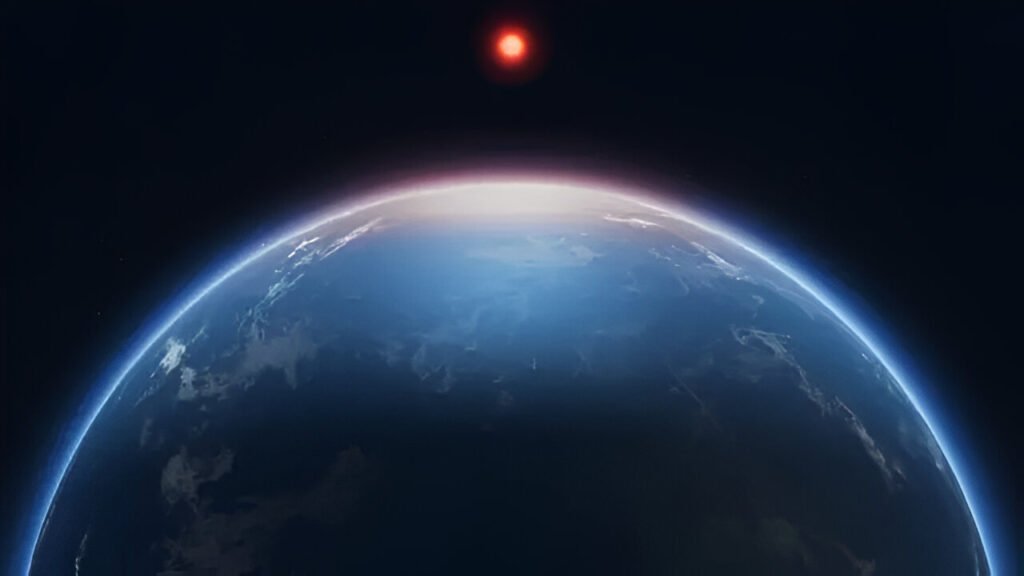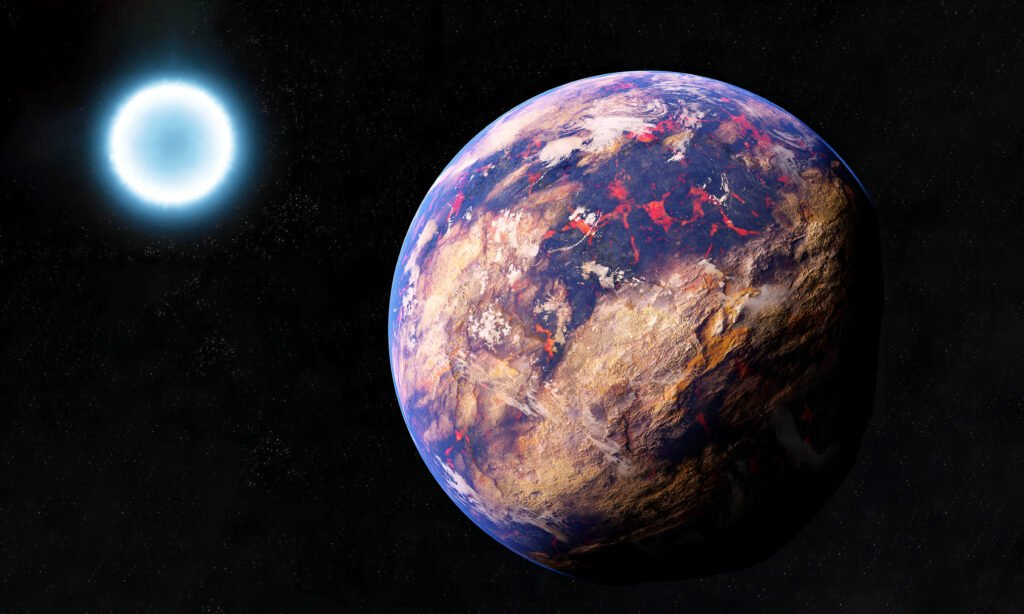
The hunt for alien neighbors got interesting lately. Star-gazers keeping tabs on a planet named K2-18b, about 124 light-years away (that’s roughly 729 trillion miles), have noticed some weird stuff that might hint at conditions where life could exist. Found in 2015, this faraway rock keeps scientists scratching their heads as they peek at it through the James Webb Space Telescope. Let’s not jump the gun though – here’s the actual scoop on why experts are both hopeful and doubtful.
Stuck Between Categories
K2-18b breaks the mold of planets we typically know. It’s bigger than Earth (about 2.6 times our radius) and weighs more too (roughly 8.6 times our mass). It’s kind of stuck in planetary limbo – too big to be called a super-Earth but too small for a mini-Neptune tag.
Astronomers recently started calling these oddballs “Hycean worlds” – basically hot planets covered in oceans with tons of hydrogen floating around them. K2-18b circles a red dwarf star within what folks call the “habitable zone,” where it’s not too hot and not too cold, so water could theoretically exist as a liquid. But don’t pack your swimsuit yet – the radiation blasting from its star and the crushing weight of its atmosphere make it nothing like home.
“These planets represent a completely different regime from the predominantly rocky worlds in our solar system,” noted Dr. Madhusudhan when discussing his team’s work.
A Chemical Surprise
The buzz really kicked off when telescope data showed several molecules hanging around in K2-18b’s atmosphere. Finding carbon dioxide and methane wasn’t shocking. But then they spotted hints of something called dimethyl sulfide, or DMS for short.
What’s the big deal? Back home, DMS mostly comes from just one thing: living stuff, especially tiny sea critters called phytoplankton. These microscopic sea dwellers release this sulfur compound when they die. Finding the same chemical so far from home naturally raised eyebrows.
“We need to be extremely careful about over-interpreting this data,” warned Dr. Kaltenegger, director of the Carl Sagan Institute, who wasn’t involved in the research. “What we’re seeing is interesting but far from conclusive evidence of biological activity.”
Some researchers reckon DMS could maybe form through purely rock and chemical processes under certain conditions, no living things needed.

Why Nobody’s Convinced Yet
K2-18b sits so darn far away that our problems start there. Even using our fanciest telescope, the planet looks like barely more than a dot. Scientists aren’t actually seeing oceans or land – they’re just analyzing tiny light changes as it filters through the planet’s gassy outer layer.
That DMS signal? It’s faint. The data hints at DMS, but the signal’s too weak to bet the farm on. Plus, we tend to look for Earth-like chemical signatures because that’s what we understand, but alien critters might operate completely differently.
“We’ve barely scratched the surface of understanding potential alien biochemistries,” explained astrobiologist Dr. Sarah Johnson in response to the findings. “Life elsewhere might use chemical pathways we haven’t even imagined yet.”
Then there’s the planet itself. Standing on K2-18b would feel like being crushed under pressure hundreds of times stronger than Earth’s sea level. Any living things surviving there would need super bizarre adaptations unlike anything we’ve ever seen.
More Answers on the Horizon
Despite all these hurdles, K2-18b has become a hot target for research. The Webb telescope will spend more time staring at it soon – observations already got the green light – which should help clear up whether DMS is really there or not.
Meanwhile, computer geeks are tweaking their models to better understand how chemicals interact on such strange worlds. These simulations might reveal whether the discovered chemicals could appear naturally without any living things involved.
“This is exactly how science should work,” remarked planetary scientist Dr. Jacob Haqq-Misra. “We make observations, develop multiple competing hypotheses, and gather more data to test them. We’re still in the early stages with K2-18b.”
This research matters beyond just this one planet. Star-gazers have spotted thousands of planets outside our solar system, with probably many more Hycean worlds waiting to be discovered. The tricks scientists are figuring out to study K2-18b will help them check out these other potentially livable places too.
Changing Our View of Life’s Possibilities
Maybe the coolest thing about the K2-18b research is how it’s stretching our imagination about where life could exist. For years, the alien hunt focused almost entirely on finding Earth twins with similar sizes, temperatures, and air.
The K2-18b findings suggest we should look broader. Life might exist in environments wildly different from Earth—perhaps even in hydrogen-heavy atmospheres of bigger worlds previously thought unlikely candidates.
“Nature continuously surprises us with its diversity,” reflected Dr. Nikku Madhusudhan, who led the Cambridge University team that analyzed the Webb telescope data. “Why should we expect life elsewhere to conform to our limited Earth-based expectations?”
While solid proof of critters on K2-18b remains out of reach, this distant world has accomplished something impressive: it’s forcing us to rethink what’s possible. And sometimes in science, asking smarter questions matters as much as finding the answers.









